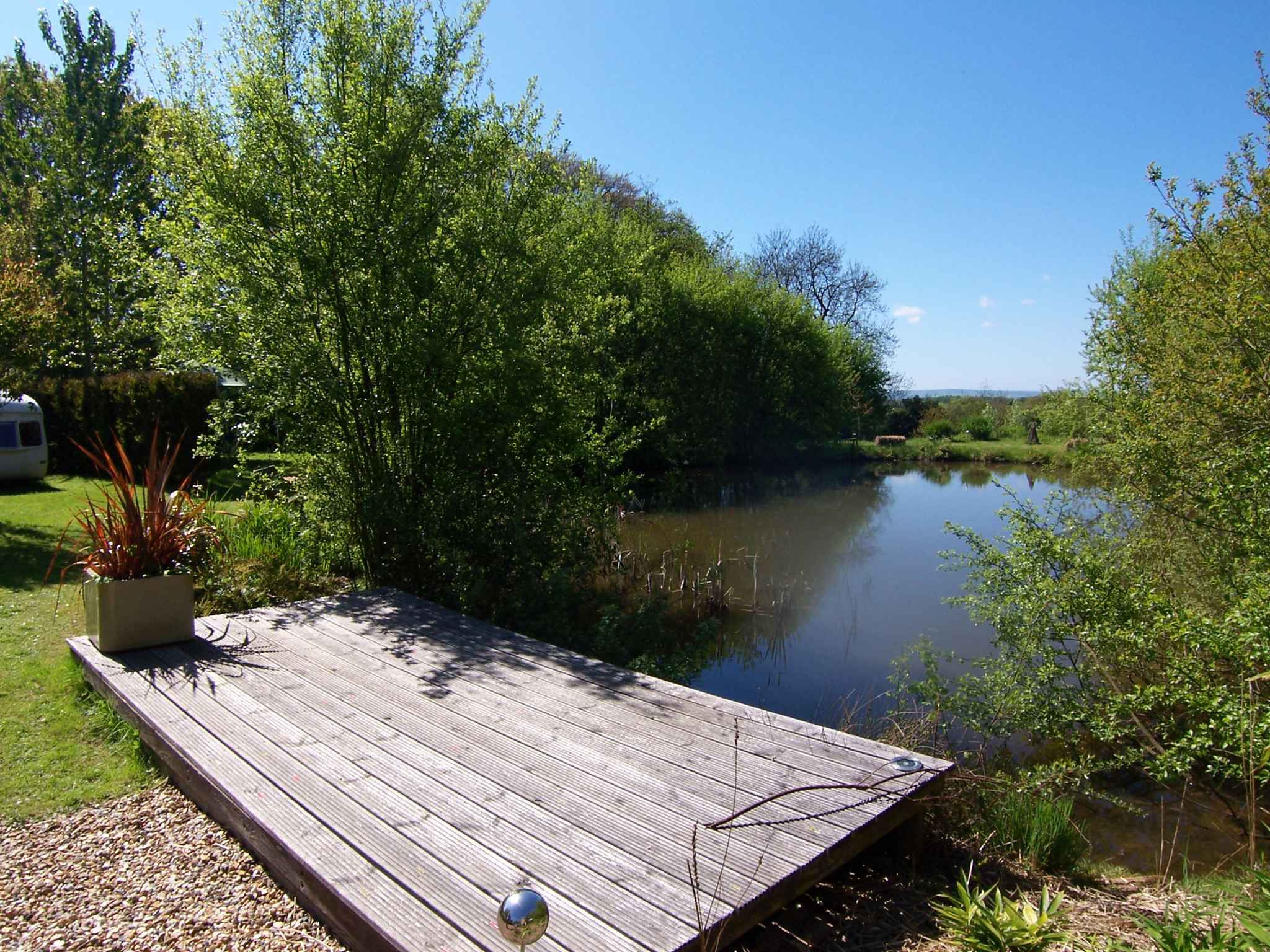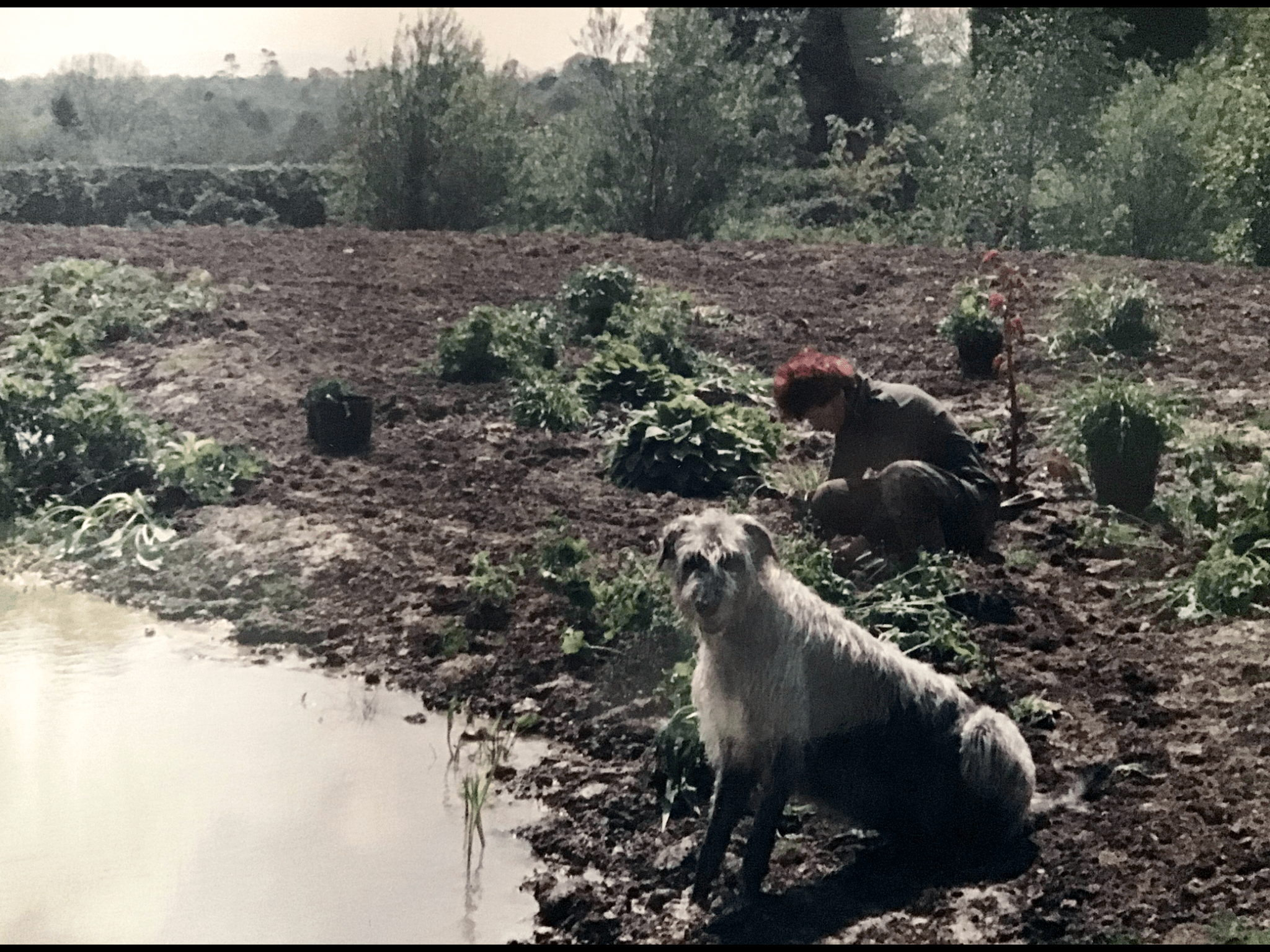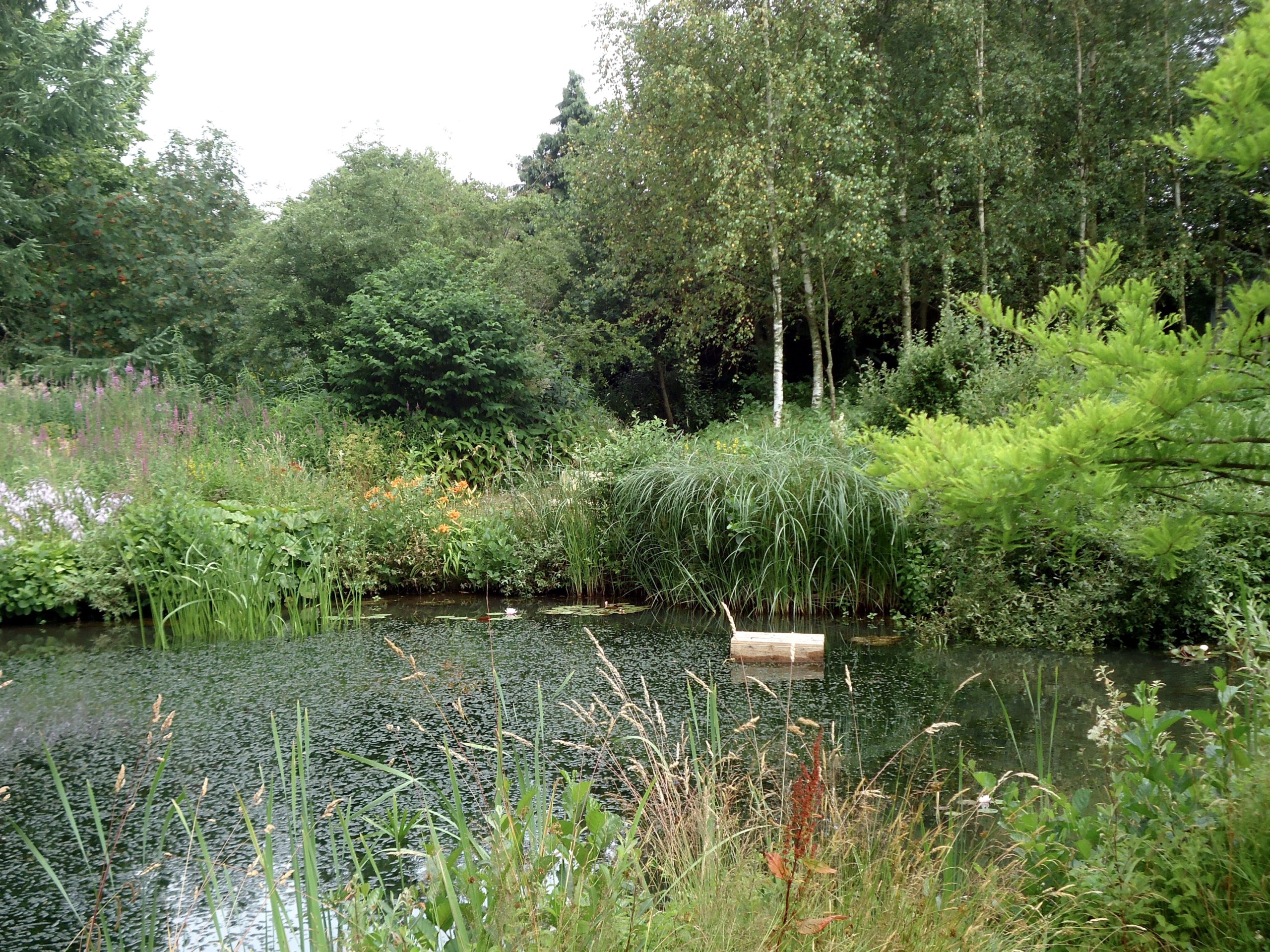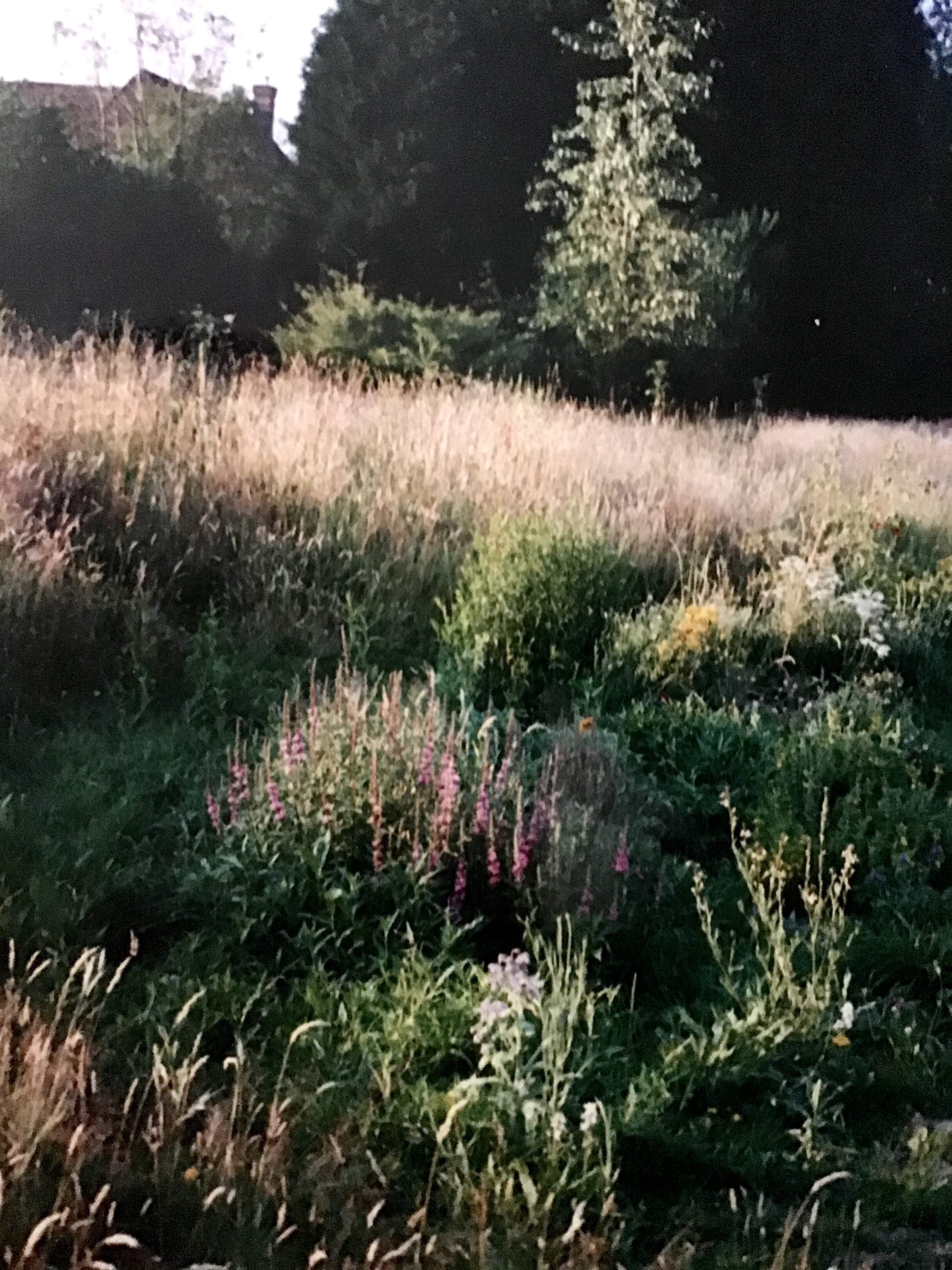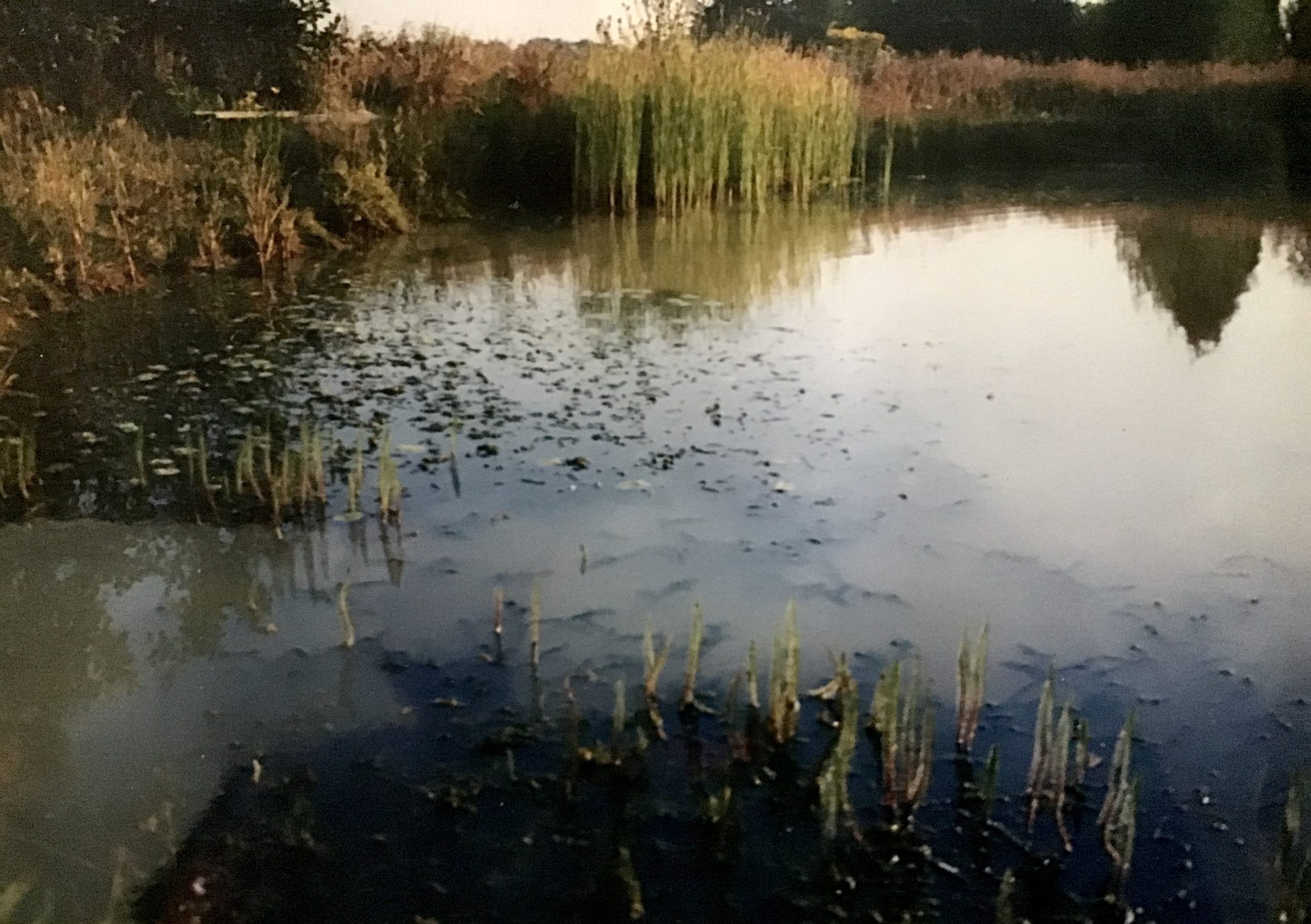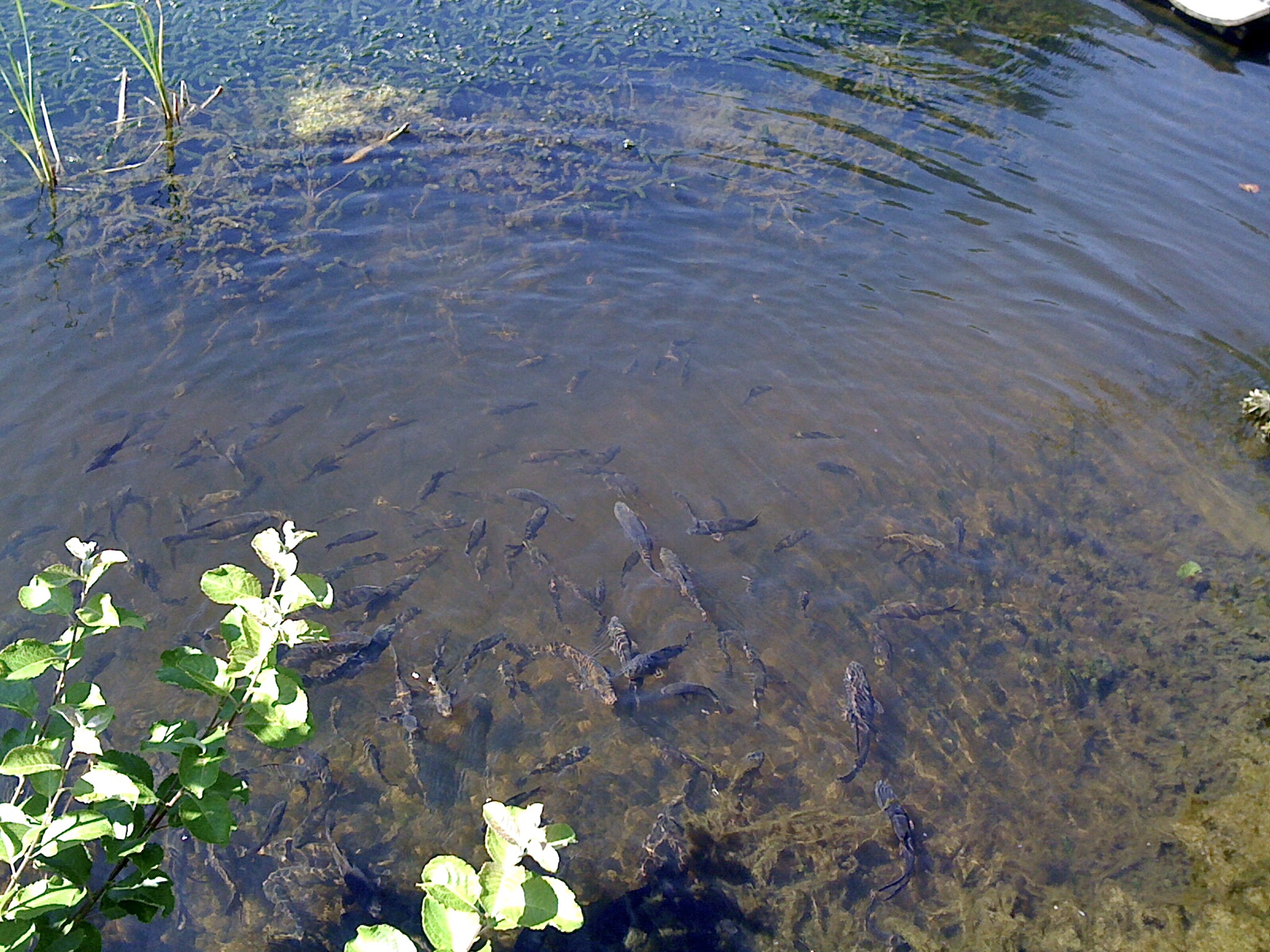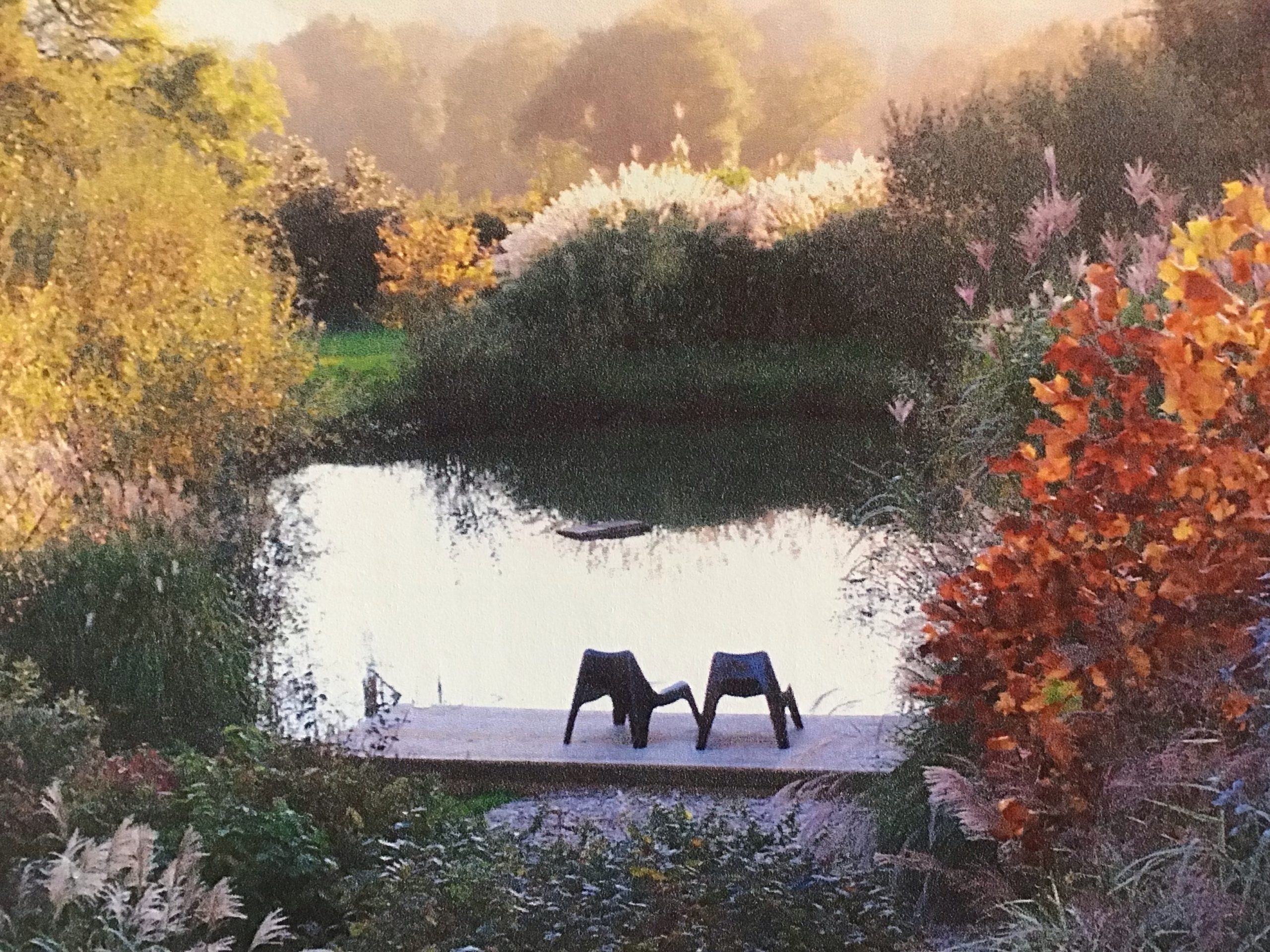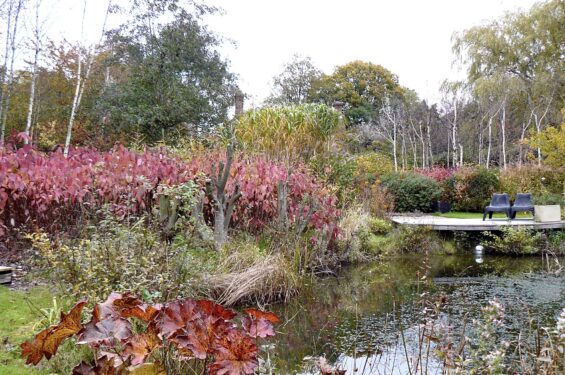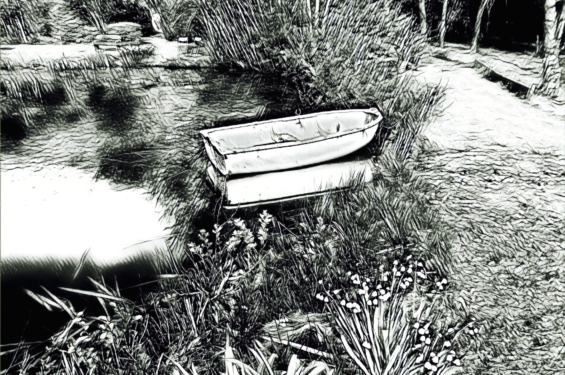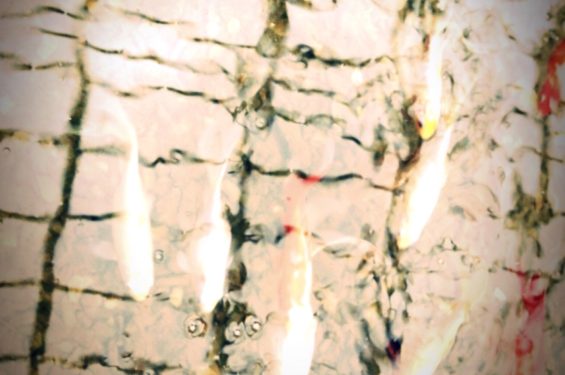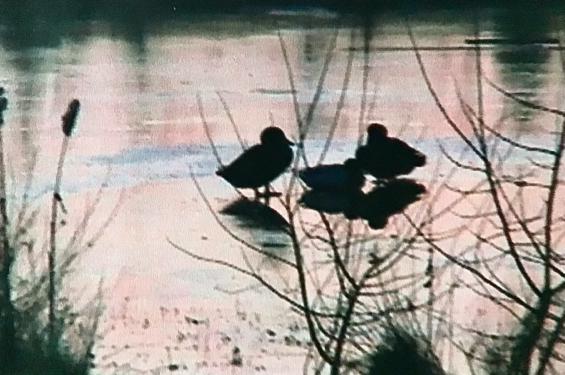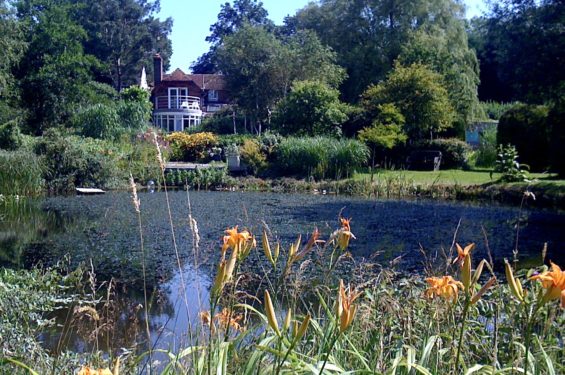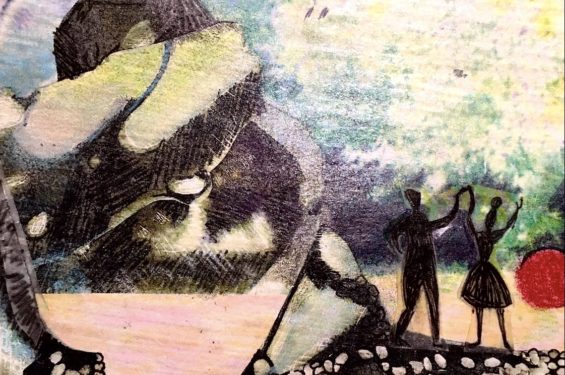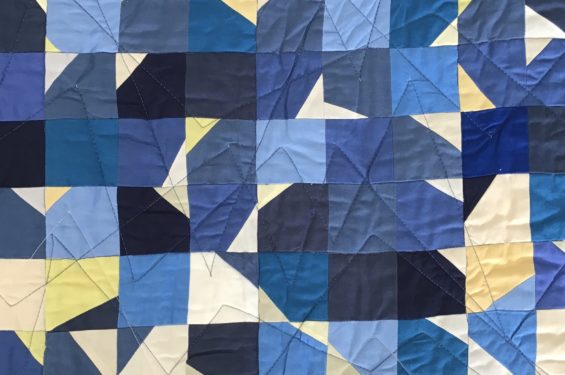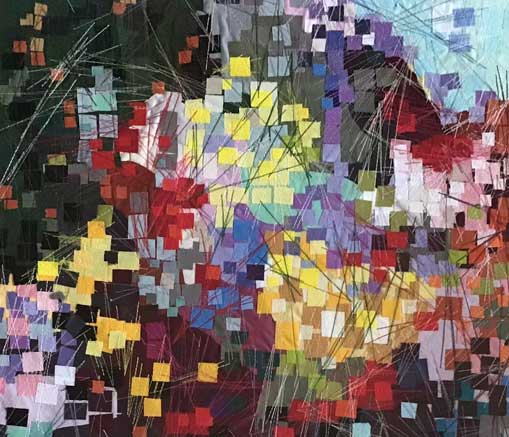The Pond – 2
Projects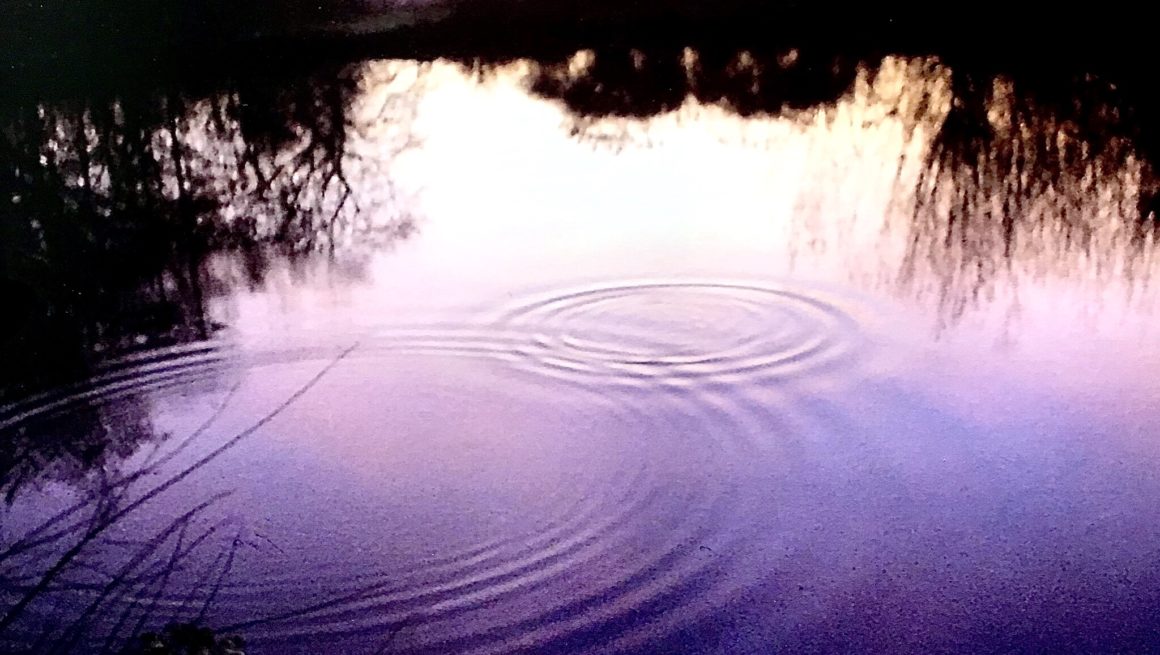
As the pond was to be informal, with grass or plants around the edges, we simply tucked the liner into the sides all the way round, having first carefully trimmed away any excess butyl.
Here and there, where we wanted to introduce bog plants and damp loving marginals, we buried the liner and covered it with a thick layer of soil.
We constructed a good sized overflow, the pipe placed just above the water level and running under the grass path with the outflow in the Alder circle. This was a good and easy solution as the Alders thrived in the damp conditions, and the pond itself never overflowed, which would have weakened the margins over time.
In the first year, because the topsoil had been disturbed by the pond construction, we were astonished by the concentration of vibrant wildflower species that had been dormant in the soil. It was an unexpected surprise.
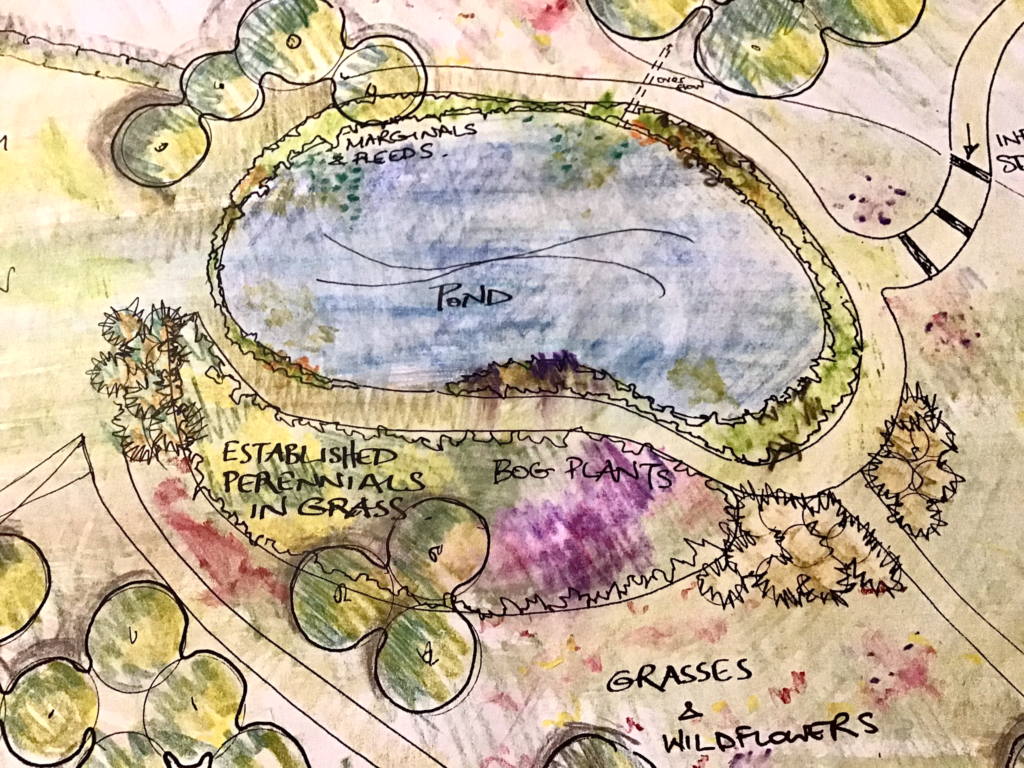
The design concept was to retain a natural appearance as far as possible, although initially the whole area looked very harsh and new. The grass path would weave around the perimeter of the pond. Sometimes next to the water, sometimes curving round borders. We aimed for a variety of plants; some ornamental, with flowers to reflect in the water, some ornamental grasses, and also areas of thick ground hugging shrubs for cover for wildlife.
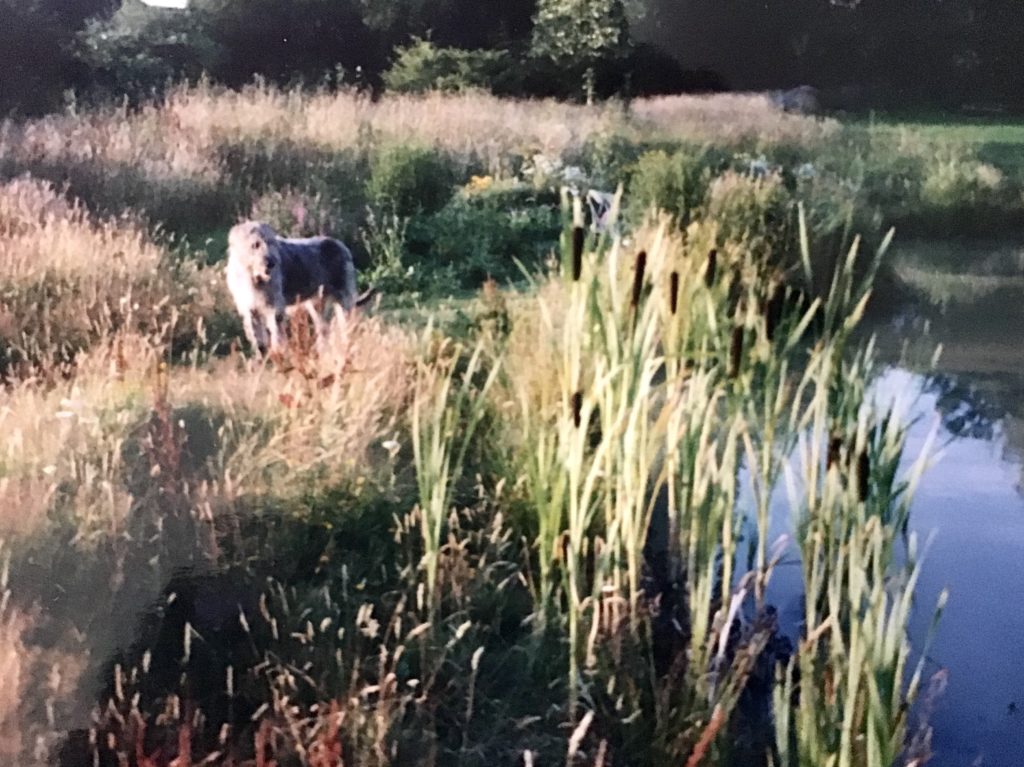
We bought £100 worth of pond and marginal plants from a specialist nursery. The sad, tiny boxful that was delivered was not what we expected from our extravagant outlay, but the plants quickly established and flourished in no time. We were also very grateful for generous plant donations from friends.
Gradually the whole area around the pond was developed and planted up with cuttings and excess stock from other parts of the garden. The huge and impressive perennial borders were a mass of green textures in the spring, real joyful colour in the summer and a muddle of seedheads in the autumn. Best of all, because they could be strimmed to the ground in late autumn, raked over and left to their own devices, they were probably the lowest maintenance area in the whole garden.
The pond had to settle and establish for several weeks before any fish could be introduced. Our choice was for Carp, both Common and Mirror, plus a few goldfish. These multiplied and became quite impressive in size. Because they were used to being fed they soon became almost too friendly for fishing to be a challenge. As we’d hoped, the pond soon attracted all sorts of wildlife.
G constructed a large seating platform from leftover decking planks. A lovely place to sit to feed the fish, watch for herons or the kingfisher, or just sit and relax at the end of the day.
